Air quality is something we may not think about every day, yet it affects every breath we take. In Nairobi, like many urban areas across Africa, the air is laced with pollutants from traffic emissions, industrial activities, and waste mismanagement. The health impacts are profound, as poor air quality heightens respiratory illnesses and threatens public wellbeing. Tackling this urgent issue requires more than awareness; it demands collective action.
To drive a unified response, Kusudi Cause Communication, in partnership with Breathe Cities and the Nairobi County Government, convened the Breathe Cities Consensus Building Workshop. This event gathered an array of stakeholders to forge solutions that would educate the public and inspire action against Nairobi’s air pollution crisis.
The Power of Collective Action
The workshop exemplified the impact of collaboration. It was designed to leverage the expertise of diverse stakeholders – from government officials to environmental advocates and community representatives – to develop a comprehensive communication strategy for cleaner air. The goal? To create a framework that elevates public awareness, engages policymakers, and ultimately reduces pollution in Nairobi.
Mapping the Path Forward: The 4P Approach
Guided by the strategic 4P framework, the workshop addressed critical areas of concern:
- Problem: Identifying the main sources of air pollution affecting Nairobi’s residents.
- People: Recognising the influence of each stakeholder in championing the clean air cause.
- Products: Crafting targeted communication strategies and messages for effective public engagement.
- Plan: Developing a clear, actionable roadmap for ongoing air quality initiatives.
By approaching these topics methodically, the workshop laid the foundation for a strategic communication plan that reflects the needs of Nairobi’s diverse population, especially those most vulnerable to pollution’s effects.
Key Areas of Focus for Collaboration
Participants pinpointed several priority areas where collective action could make the greatest impact:
- Vehicular Emissions: With heavy traffic and outdated vehicles contributing significantly to pollution, the workshop called for collaboration between the public and private sectors. Stakeholders discussed the need for awareness campaigns around vehicle maintenance and the benefits of adopting cleaner alternatives.
- Waste Management: Waste burning is a leading source of air pollution, especially in informal settlements. A coordinated effort is essential to promote sustainable waste management practices that reduce harmful emissions and protect public health.
- Public Awareness and Education: A powerful theme throughout the workshop was the need for accessible, relatable information. Health-based messaging was highlighted as a particularly effective approach, enabling people to understand the personal impact of air pollution and encouraging them to adopt eco-friendly practices.
- Policy Enforcement: Stakeholders emphasised the importance of robust policy enforcement to curb pollution from industrial and vehicular sources. The Nairobi County Government’s role emerged as crucial, yet collaboration with community voices could drive stronger accountability and support for policy measures.
Stakeholder Mapping: Who Can Make a Difference?

A major focus of the workshop was mapping the influence and interests of key stakeholders. Using a net map toolkit, participants assessed the power dynamics and influence of various actors in reducing pollution. They identified specific stakeholders who could drive change in each area of concern, from public health officials and transport authorities to community leaders. This insight will help guide the development of communication efforts that resonate with specific groups, enhancing the impact of the initiative.
Challenges and Recommendations for Future Action
While the workshop marked a significant step forward, it also revealed challenges, particularly the need for more time to fully explore each topic. Nevertheless, participants generated actionable recommendations:
- Sustain Continuous Engagement: Establishing a long-term forum where stakeholders can share updates and refine strategies will be vital for sustained progress.
- Leverage Community Media: Local media channels can effectively reach Nairobi’s underserved populations, ensuring that messages about air quality reach the communities most affected by pollution.
- Conduct Targeted Audience Research: Understanding audience needs and preferences will allow stakeholders to tailor messages that inspire behavioural change.
- Foster Institutional Synergy: By enhancing collaboration across sectors, stakeholders can align resources and create a cohesive strategy for tackling air quality issues.
A Vision for Good Air Quality in Nairobi
The workshop was a powerful reminder of what’s possible when diverse groups unite for a common cause. In Nairobi, where air pollution is an urgent threat, collaborative action is essential. Moving forward, the stakeholders’ commitment to continuous engagement, research, and policy advocacy will be critical. The Breathe Nairobi initiative, with support from Kusudi and the Nairobi County Government, is well on its way to creating lasting change – proving that cleaner air is within reach when everyone comes together to breathe life into the solution.
Conclusion
The Breathe Cities Consensus Building Workshop was a vital first step towards a healthier Nairobi. As the participants continue to work together, their collaborative efforts hold the promise of a future where Nairobi’s air is cleaner, and safe for all. Through sustained stakeholder collaboration, Nairobi is paving the way for other cities across Africa, demonstrating that change is not just necessary – it’s achievable.

